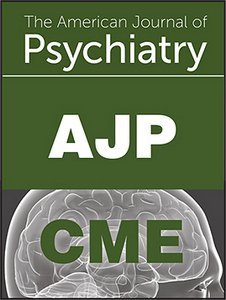An Update on Psychotherapy for the Treatment of PTSD.
IF 15.1
1区 医学
Q1 PSYCHIATRY
引用次数: 0
Abstract
Posttraumatic stress disorder (PTSD) symptoms are part of the normal response to trauma. Most trauma survivors will recover over time without intervention, but a significant minority will develop chronic PTSD, which is unlikely to remit without intervention. Currently, only two medications, sertraline and paroxetine, are approved by the U.S. Food and Drug Administration to treat PTSD, and the combination of brexpiprazole and sertraline and MDMA-assisted therapy have FDA applications pending. These medications, and the combination of pharmacotherapy and psychotherapy, are not recommended as first-line treatments in any published PTSD treatment guidelines. The only interventions recommended as first-line treatments are trauma-focused psychotherapies; the U.S. Department of Veterans Affairs/Department of Defense PTSD treatment guideline recommends prolonged exposure (PE), cognitive processing therapy (CPT), and eye movement desensitization and reprocessing, and the American Psychological Association PTSD treatment guideline recommends PE, CPT, cognitive therapy, and trauma-focused cognitive-behavioral therapy. Although published clinical trials of psychedelic-assisted psychotherapy have not incorporated evidence-based PTSD psychotherapies, they have achieved greater response rates than other trials of combination treatment, and there is some enthusiasm about combining psychedelic medications with evidence-based psychotherapies. The state-of-the-art PTSD psychotherapies are briefly reviewed here, including their effects on clinical and neurobiological measures.创伤后应激障碍心理治疗的最新进展。
创伤后应激障碍(PTSD)症状是对创伤正常反应的一部分。大多数创伤幸存者在没有干预的情况下会随着时间的推移而恢复,但有相当一部分人会发展成慢性创伤后应激障碍,如果没有干预,这种情况不太可能缓解。目前,只有舍曲林和帕罗西汀两种药物被美国食品和药物管理局批准用于治疗创伤后应激障碍,而brexpiprazole和舍曲林以及mdma辅助疗法的联合疗法正在FDA申请中。这些药物,以及药物治疗和心理治疗的结合,在任何出版的PTSD治疗指南中都不推荐作为一线治疗方法。唯一被推荐作为一线治疗的干预措施是以创伤为重点的心理治疗;美国退伍军人事务部/国防部PTSD治疗指南推荐长时间暴露(PE)、认知加工疗法(CPT)和眼动脱敏和再加工,美国心理协会PTSD治疗指南推荐PE、CPT、认知疗法和以创伤为重点的认知行为疗法。尽管已发表的迷幻药物辅助心理治疗的临床试验并没有纳入循证PTSD心理治疗,但与其他联合治疗的试验相比,它们取得了更高的反应率,并且人们对迷幻药物与循证心理治疗的结合有一些热情。本文简要回顾了最新的创伤后应激障碍心理治疗方法,包括它们在临床和神经生物学测量方面的影响。
本文章由计算机程序翻译,如有差异,请以英文原文为准。
求助全文
约1分钟内获得全文
求助全文
来源期刊

American Journal of Psychiatry
医学-精神病学
CiteScore
22.30
自引率
2.80%
发文量
157
审稿时长
4-8 weeks
期刊介绍:
The American Journal of Psychiatry, dedicated to keeping psychiatry vibrant and relevant, publishes the latest advances in the diagnosis and treatment of mental illness. The journal covers the full spectrum of issues related to mental health diagnoses and treatment, presenting original articles on new developments in diagnosis, treatment, neuroscience, and patient populations.
 求助内容:
求助内容: 应助结果提醒方式:
应助结果提醒方式:


